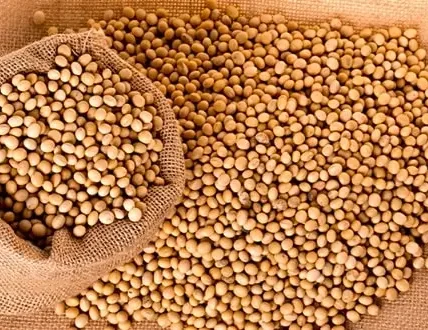Tin is a very a versatile metal with various industrial applications. The product has seen dynamic shifts in its global production landscape. With a number of industries getting proper contributions from the tin, a lot of companies are dependent on this specific product. Certain nations have risen to prominence as the largest producers of tin. And yes, they play important roles in satisfying the herculean global demand for tin products. Here we will be talking about the 10 largest producers of Tin worldwide.
Countries With Highest Tin Production
1. China – 85,000 MT:
China reasserts global hegemony with the production of 85,000 metric tons in tin. The stable mining sector backs the firm position in control of the tin industry by the nation, as do startling scientific and technological breakthroughs, as well as the significant investment in the state-of-the-art extraction technology. Top-level tin production of China is dependent on mining. The country owns large tin resources that apply its natural wealth. Mining set up in an established and efficient manner helps withdraw substantial tin, supporting this strategic advantage. The mining power aids the country oversteps global tin demand. Technology has placed China on top in tin manufacture. Modern mining equipment boosts productivity and resource usage. China’s innovation has enhanced tin extraction and decreased environmental impact, exhibiting sustainable mining. China became a tin giant by investing in advanced extraction methods. The nation strategically extracted tin from mine using cutting-edge technologies. Chinese investments in extraction process refinement and modernization show its commitment to tin market leadership.
2. Indonesia – 80,000 MT:
Placed in the 2nd position for the global tin output, Indonesia has a potential output set at 80,000 metric tons projected for the year. The impressive top 2nd place is indeed a testimony of what the country has based on the mineral’s forte where good and bad blessings of abundance have continued to yield spectacularly. Indonesia’s tin industry reaps the rewards of its vast reservoirs of tin, strategically distributed across the country. These rich mineral deposits provide a solid foundation for a thriving tin sector, allowing Indonesia to make significant contributions to the global tin market. The strategic location and diversity of these deposits enable the nation to sustain a robust and consistent level of tin production. The country’s well-established mining infrastructure further propels Indonesia into the spotlight as a key player in the tin industry.
3. Myanmar – 54,000 MT:
Myanmar produced 54,000 metric tons of tin, ranking third. Its robust mining industry and sophisticated extraction methods are helping it grow in the global tin market. Myanmar’s mining sector dominates tin production. Tin is mined in Myanmar to meet global demand. Myanmar’s efficient and controlled mining operations generate a lot of tin, reflecting its growing industrial importance. Strategic extraction boosts Myanmar’s tin output. The country’s tin mining practices boost productivity and reduce pollution. Sustainable and ethical mining practices make Myanmar a responsible tin producer by international standards.
4. Peru – 18,500 MT:
Peru produces 18,500 metric tons of tin, fourth globally. Peru’s abundant mineral resources and sustainable mining practices drive its mining industry contributions. Peru’s various minerals make it a mining powerhouse. Tin is among the country’s abundant minerals. This adaptability boosts Peru’s tin market position and displays its capacity to navigate and extract resources from various mineral formations. Peru’s high tin output relies on sustainable mining. In an ecologically conscious era, Peru encourages sustainable mining. Peru follows tight norms and international sustainability requirements to make its mining operations profitable and environmentally beneficial. Peru balances mineral extraction with environmental conservation, according to the business.
5. Bolivia – 17,000 MT:
At 17,000 metric tons each, Bolivia and Brazil rank sixth global tin production. Tin reserves support Bolivia’s economy and industries. Bolivia’s tin industry is global due to its vast resources. Bolivia can feed the global supply chain due to its huge tin reserves. Bolivia’s economy relies on this natural resource, which supplies tin globally. Bolivia’s economy relies on tin. The nation’s 17,000 metric tons of tin production demonstrate its mining and economic development capabilities. Bolivia’s economy relies on tin production, which supports several sectors.
6. Brazil – 17,000 MT:
At 17,000 metric tons, Brazil and Bolivia tie for sixth global tin output. Strong mining, excellent technology, and well-developed infrastructure propel Brazilian tin output. Tin mining in Brazil is important internationally. The nation strategically supplies the world market with tin from its rich mineral deposits. Brazil’s mining success is attributable to its ability to manage natural resources and produce consistently. Technological innovations power Brazil’s tin industry. Modern mining technology improves efficiency, resource use, and production. Brazil’s commitment to technological innovation makes it a worldwide tin market powerhouse that meets industrial needs.
7. Congo – 10,000 MT:
With 10,000 metric tons, the DRC ranked eighth in global tin output. The nation’s mineral-rich terrain and mining developments show its global tin market effect. Tin production is renowned in the Democratic Republic of the Congo due to its mineral-rich landscape. Abundant tin resources strategically placed around the country may contribute considerably to the global tin supply chain. The DRC’s natural riches make it a worldwide player. Tin industry growth in DRC is due to mining method improvements. The nation aggressively improves mining efficiency and sustainability. The DRC employs modern technology and best practices to ensure that tin output fulfills global ethical and eco-friendly mining standards.
8. Nigeria – 7,500 MT:
Nigeria produced 7,500 metric tons of tin, eighth-most. Nigeria, with its vast natural resources, is a big player in the global tin market owing to its mining sector. Nigeria produces the eighth-most tin due to its natural resources. The country’s excellent geology facilitates tin and other mineral exploitation. Nigeria’s diversity boosts its economy and tin production. Nigeria is becoming more important in the global tin market due to mining. Tin is vital to mineral production despite industrial changes. Nigeria’s commitment to modern mining processes, technology, and sustainability reflects its desire to stay relevant in the global mining industry.
9. Australia – 7,000 MT:
For 2024, Australia produced 7,000 metric tons of tin, ranking tenth internationally. Technology-driven mining and strong environmental regulations support Australia’s global tin market supremacy. Tin production in Australia is 7,000 metric tons, proving its mining supremacy. The nation’s rich geology and tin resources provide the raw materials required to compete in the global tin market. Due to its natural wealth, Australia supplies enough tin to meet world demand. Australia leads tin output with technology-driven mining. Modern mining technology improves efficiency, productivity, and resource utilization. Australia is a dynamic participant in the global tin market and can adapt to industry developments due to its innovation drive.
10. Vietnam – 4,500 MT:
The tenth largest tin producer is Vietnam, producing 4,500 metric tons. Strategic mining and sustainable methods have grown the nation’s tin sector. Vietnam focuses strategic mining as the tenth-largest tin producer. Tin extraction is efficient and meticulous since the nation carefully explores its reserves. Vietnam can influence the global tin market and help it grow with this strategy. Vietnamese tin rises rapidly owing to its sustainability. Vietnamese eco-friendly mining stands out in the global market as environmental concerns develop. The nation actively implements sustainability into its mining activities to fulfill contemporary environmental criteria for tin.
Conclusion
The top 10 largest producers of tin in 2024 underscore a cross-section of nations that deliver much to the global tin market. With their rich mineral deposits, advanced mining technologies, commitments to sustainable industrial practices and more – tin is a metal indispensable in various industries and the world cannot overlook their position as key players towards meeting its demand. As these countries continue to strive best in facing a number of challenges and looking for new opportunities, the global tin market ensures further growth and development.
FAQs
Q1. How is tin mined?
Ans: Tin is mined through both primary (hard-rock) mining and secondary mining of placer deposits. Primary mining involves extracting tin-bearing mineral ores (usually cassiterite) from underground or open pits. In secondary mining, tin is recovered from alluvial deposits where it has accumulated after being eroded from primary geological deposits.
Q2. How is tin processed after mining?
Ans: After extraction, tin ore undergoes several stages of processing to convert it into a usable form:
- Ore concentration: The ore is crushed and then concentrated by various methods such as gravity separation, flotation, or magnetic separation to increase the tin content.
- Smelting: Concentrated ore is then smelted using carbon or a reducing agent to extract pure tin metal.
- Refining: The tin is further refined to remove impurities, typically through electrolytic refining.
Q3. What is the future outlook for tin production?
Ans: The future demand for tin is closely tied to the electronics industry and the use of solder, as well as sustainable packaging solutions such as tinplate. With the ongoing growth in technology and an increased focus on renewable energy systems, which require solder for photovoltaic cells, the demand for tin is expected to remain strong. However, the exact trajectory will depend on technological advancements, recycling rates, economic conditions, and regulatory factors influencing both supply and demand.

Brandon is the cheif editor and writer at WorldUnfolds.com. With a passion for storytelling and a keen editorial eye, he crafts engaging content that captivates and enlightens readers worldwide.














